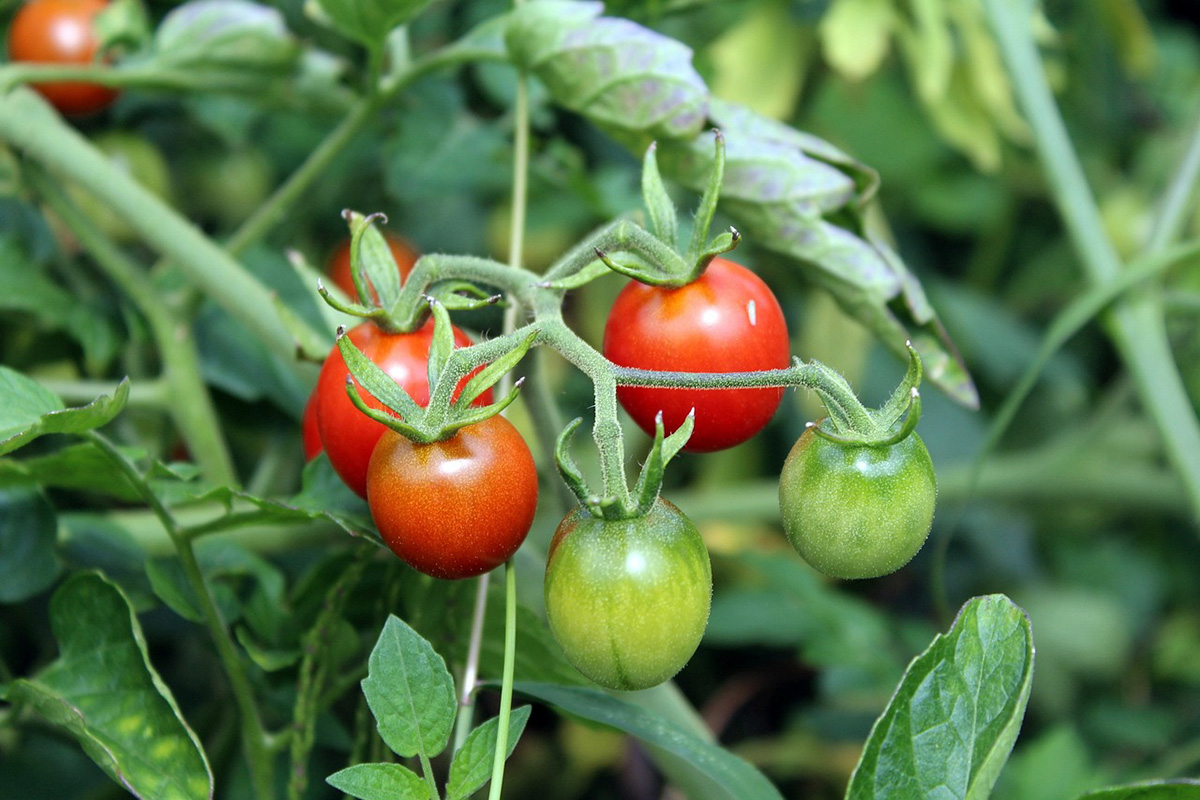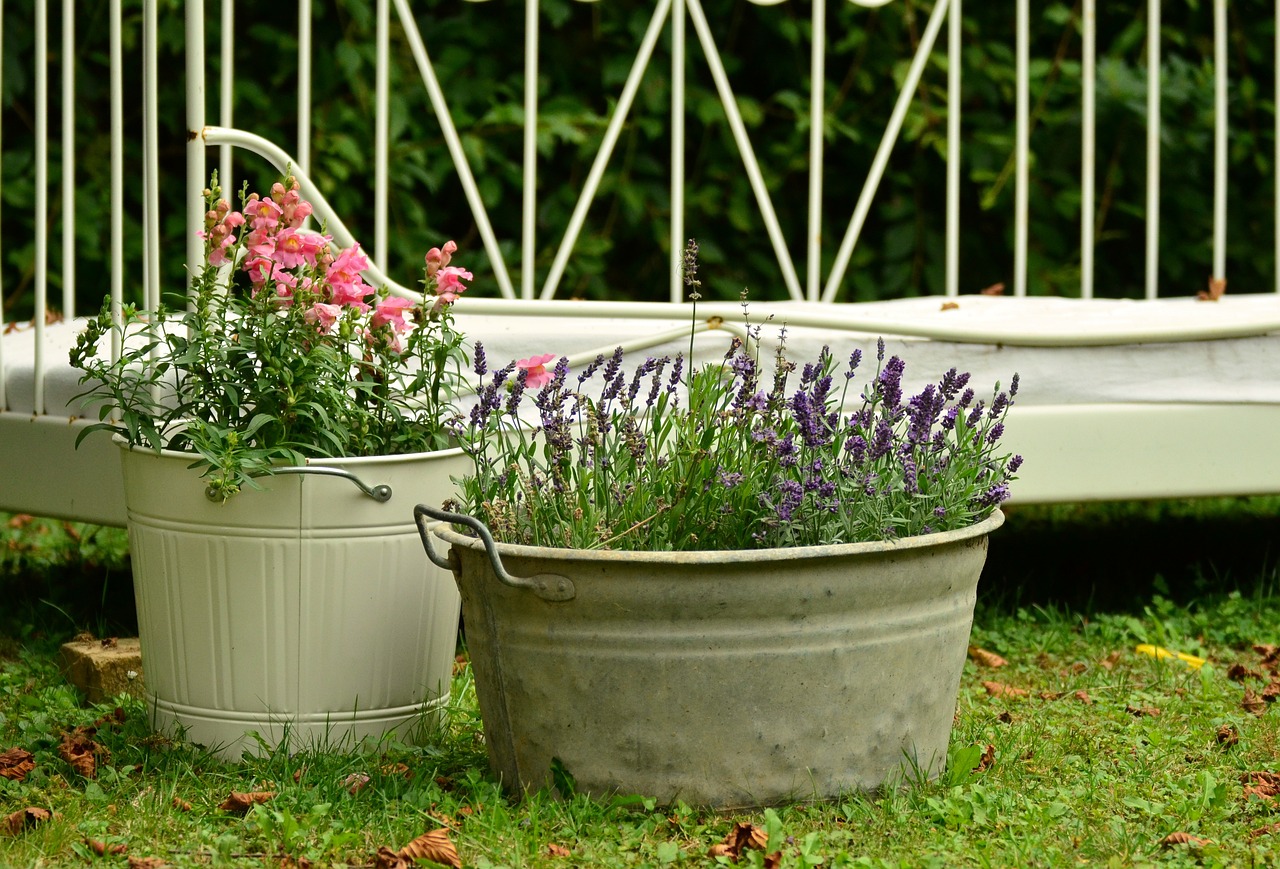
If you're short on space, try your hand at creating a patio or container garden. Containers fit well on an apartment patio or balcony, as well as in larger landscapes. The key to being successful involves using large containers, a good growing media, and selecting vegetables and flowering plants sized right for growing in containers.
Container gardens are also a good alternative to help solve the following problems.
- Older homes often have high levels of lead in planting beds near the home's foundation, due to the use of lead-based paint in years past, which has accumulate in the soil.
- Gardens with high levels of soil-born disease pathogens, such as Fusarium.
- Small landscapes with limited space for a vegetable garden can be hampered by the presence of a black walnut tree. Instead of planting vegetables around the roots of these trees, use containers for gardening or build a raised bed away from the dripline of the tree.
- Containers are also helpful for those with mobility problems. They eliminate the need to kneel down when planting, or stoop over to harvest.
 The most productive vegetables to grow in containers are tomato, pepper, salad crops, spinach, kale and chard. Herbs, and cole or root crops such as cabbage, broccoli, cauliflower, Brussel sprouts, carrots and radish are also well adapted.
The most productive vegetables to grow in containers are tomato, pepper, salad crops, spinach, kale and chard. Herbs, and cole or root crops such as cabbage, broccoli, cauliflower, Brussel sprouts, carrots and radish are also well adapted.
Be sure to select dwarf and bush types of vegetables, including some of the tomato cultivars listed below.
- Cherry- Pixie II, Orange Pixie, Sugary
- Standard- Bush Celebrity, Bush Steak, Jetstar, Mountain Spring, Patio, Patio Princess,
- Beefsteak- Bush Goliath
 Containers & Soil
Containers & Soil
Many types of containers can be used for patio gardening. Containers may be clay, plastic, glass, metal, or wood, but also consider items you have on hand that might be considered junk. Examples include old garbage cans or wheelbarrows, and half whiskey barrels. Whatever container you use, be sure to create several holes in the bottom of the container for drainage.
Container size plays a significant role in the success of your patio garden, so choose the largest containers possible. Larger containers hold more moisture and buffer soil temperature better than small containers. Tomatoes, in particular, need a large container to perform well so 10-20 gallon containers, or larger, are preferred. However, with small patio-type tomato cultivars, you could get away with a 3-gallon container, but no smaller!
Avoid the use of garden soil as a planting media. Usually it will be easily compacted in a container and restrict root growth; plus it contains many plant pathogenic soil bacteria and fungi. A better choice is to make your own soil mix containing two to three of the following components: compost, peat moss, vermiculite, perlite, sand, and bark chips. Don't use more than 50% compost in the blend; decreasing plant growth has been documented with higher rates.
Provide full sun and regular watering for your vegetables to do their best.
Slow release, granular fertilizer can be mixed in the soil at planting time. Use 1.5 tablespoon per gallon of container size. Water soluble fertilizer can be use every 1-2 weeks throughout the growing season, for additional nutrients, but mix it slightly weaker than the label recommendation.
 Support Structures
Support Structures
Taller vegetables, like tomatoes and peppers, will likely need support. Tomato cages can be used for smaller vegetables, such as peppers or bush cucumbers. Create cylinders with concrete reinforcing wire to support taller plants like tomatoes. Anchor them well into the soil, so they can support the weight of a fully loaded tomato plant.
Images
- Pixabay.com
- Pixabay.com
- Sarah Browning, Nebraska Extension Educator